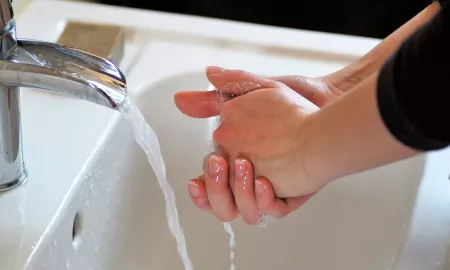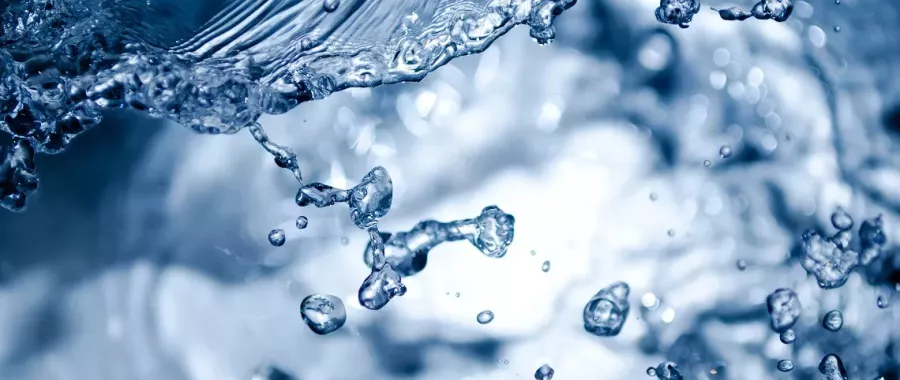A common surprise for many clients is that even a mains water supply contains bacteria. Many people assume that, because water is safe to drink, it is sterile – but this is not the case.

Water companies have a duty to ensure that the water they provide is fit to consume by removing all harmful bacteria - but non-harmful bacteria will remain. With non-harmful bacteria in our domestic systems, water quality can become an issue if it can breed. To confirm the health of your water system, one method includes the microbiological testing of your water systems.
Different test types
Water samples are collected from premises and tested for different types of bacteria for a number of reasons. The legislative requirements and the type of water being tested will determine the tests to be carried out:
- By law, it is required that legionella samples are taken from specific types of plants including cooling towers, vehicle washes and spa pools. This is set out in the Approved Code of Practice L8: ‘The control of legionella bacteria in water systems’.
- Drinking water samples are collected to ensure that the cold water supply is free from specific pathogenic indicator bacteria. A drinking water test looks at the overall number of bacteria present in the water that is able to grow – known as a Total Viable Count (TVC). Testing at two different temperatures shows the levels of environmental bacteria (at 22°C) and shows the bacteria that can grow at body temperature (at 37°C). Coliforms and E. coli are faecal indicator bacteria and the presence of these means that faecal contamination has occurred and the water is unfit to drink.
- Propensity to legionella testing – this is a general ‘catch-all’ where the TVC test is carried out at 30°C to show both environmental and pathogenic bacteria. This test shows the overall health of the water system and is a general measure of water quality. A low TVC level indicates an overall low level of bacteria in the system, whereas a much higher TVC level - for example, 10,000 cfu (colony forming units) per ml of water - indicates that the system may be suffering from biofilm contamination.
Collecting samples
When samples are collected, SOCOTEC’s site technicians are very careful to ensure that there is no external contamination to the sample bottle. To minimise the risk, the lid of the container should be taken off at the last possible moment and immediately resealed as soon as the bottle is filled. The lid should not be put down out of their hand either.
The sample bottles are always sterile and contain a neutralising agent so that any potential residual low level chlorine present in the mains is removed. Each bottle is clearly labelled with the sampling location and placed in a cool box for transportation back to the laboratory, with hot water samples kept separate from cold water samples.
Back at the laboratory
When the samples arrive back at the laboratory, they are booked in to the Laboratory Information Management System (LIMS) and allocated a unique sample number to enable the samples to be tracked through the process. Samples are separated into batches and tested in groups.
Microbiology testing is a very simple principle; a volume of water is mixed with a specific growth agar (jelly), incubated at the bacteria’s optimum temperature and then left to grow. After a set time, the petri plates are taken out of the incubator and the colonies are counted. But there are very few methods of testing that are really that simple; in practice, there are usually more stages required.
TVC test
Using sterile equipment, 1ml of the water sample is placed in a petri dish that has been labelled with the LIMS unique sample number. Mixed with molten agar and allowed to solidify, the sample is placed in an incubator at a set temperature to grow and multiply – exactly what bacteria do best!
Coliform and E. coli testing
The method for Coliform and E. coli testing is slightly more complicated due to the volume of liquid that needs to be tested; 100ml of water needs to be tested and this volume is not practical to mix with agar directly.
Instead, the water is filtered through a very fine, sterile filter paper which captures the bacteria on the face of the filter. Placed on the surface of a pre-poured, set agar plate, the nutrients pass through the filter - letting only the coliform andE. coli bacteria grow while preventing other bacteria. Again, this is placed in an incubator and left to let nature take its course and the bacteria grow.
Legionella
Specific Legionella testing can be more complex. A litre of water is required, so - depending on how silted the water is - the process may need as much as four filters to be used. These filters are placed into a sterile plastic container that has sterile liquid in it, agitated and then mixed so that bacteria caught on the surface of the filters are re-suspended into the smaller volume. This means there is a litres worth of bacteria in 20ml. This is the final concentrated solution.
To get a Legionella result, three tests have to be carried out on the concentrate.
- The first is simply working with the concentrate without any further treatment. 5ml of the concentrate is then added to 5ml of sterile solution. Then 0.25ml of the solution is plated directly onto the surface of a specific growth agar (known as Legionella GVPC) designed to allow legionella bacteria to grow and suppress the growth of others. This is repeated onto a second plate.
- The second part of the test adds 5ml of acid to 5ml of concentrate for five minutes and again 0.25ml is placed onto two agar plates.
- The third part takes 5ml of concentrate and mixes it with 5ml of sterile solution and then warms it through to 50°C for 30 minutes. Again, two plates are prepared using 0.25ml of heated liquid onto the Legionella agar. All six plates are then incubated. Legionella bacteria can take up to 10 days to grow. The plates are reviewed at day four and day seven before the final result being read on day 10. As Legionella bacteria has potential infection risks, clients are notified as soon as positive results are received rather than waiting for the full 10 days incubation to elapse.
Interpretation of Results
Legionella tests are reported by identifying the species of Legionella bacteria that have been found and the number of colonies found per litre of water; if no legionella has been found, it is reported as Not Detected in the volume of water tested. A positive legionella result of >100 cfu per litre requires action to be taken on the contaminated system.
Potable water tests are required to be free from coliforms and E. coli bacteria, meaning that any quantifiable result is classed as a failure. Action would need to be taken to clean and disinfect the local outlet in the first instance, followed by resampling to ensure that the cleaning was effective. While TVC tests do not have formal set limits in legislation, the industry standard is 100 cfu per ml.
Propensity to Legionella TVC test results are based on guidelines issued by the HSE for controlling bacteria in cooling towers:
- TVC levels <1000 cfu per ml are satisfactory
- Levels from 1000 up to 10,000 cfu per ml require investigation
- Levels >100,000 cfu / ml require immediate action
For further information about water sampling or the health of your water systems, please get in touch.
Want to find out more about SOCOTEC's water treatment services?

You might also like






Add new comment